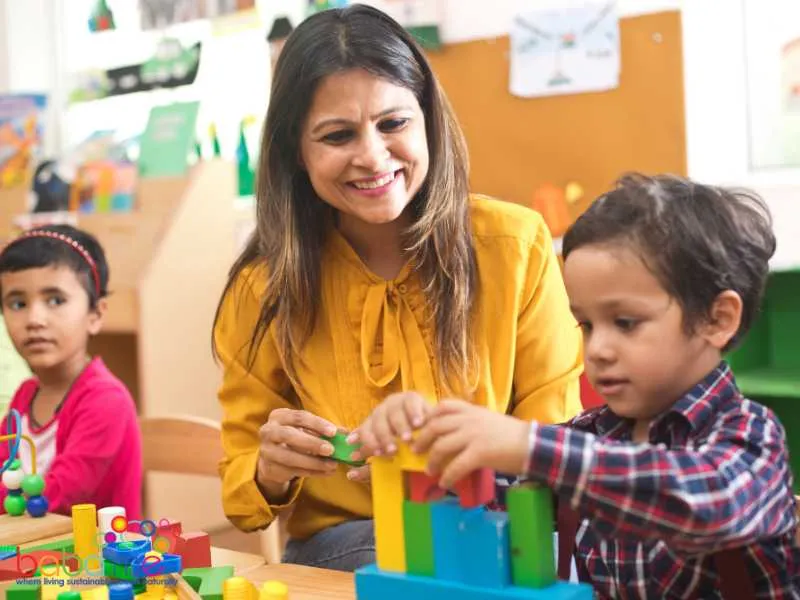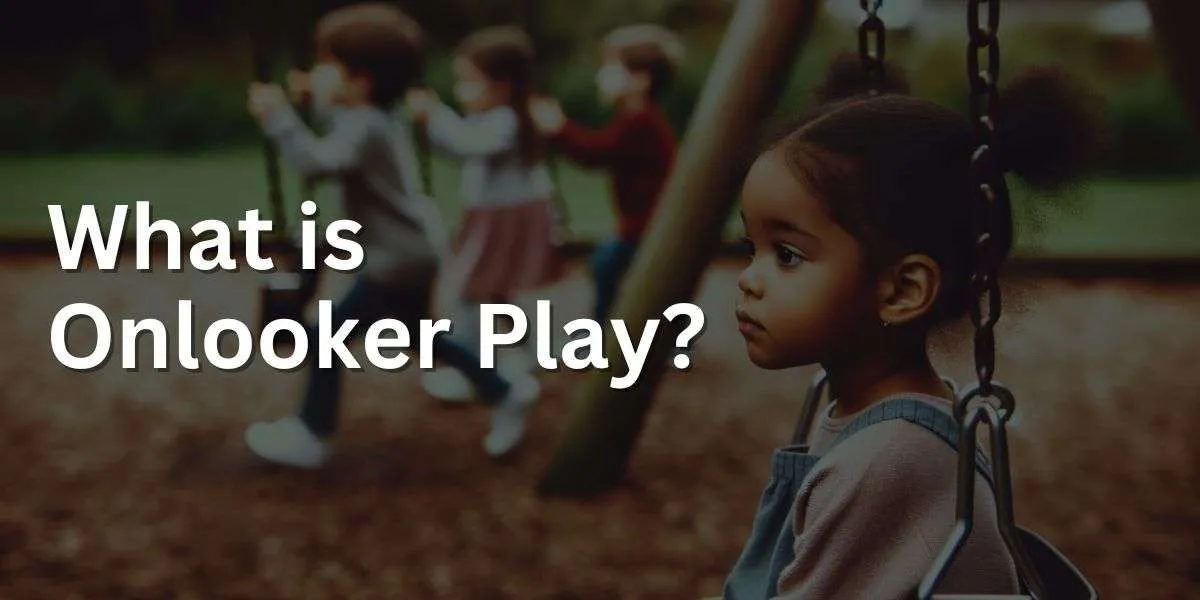Venturing into the nuanced stages of childhood play, a unique phase surfaces: Onlooker Play. Distinct from direct participation, this stage embodies a form of observational engagement, reflecting a child’s curiosity and cognitive development.
Onlooker Play occurs when children observe their peers playing without actively joining in the activity. However, this doesn’t imply passivity. On the contrary, the child is mentally active, processing the play dynamics, understanding rules, and perhaps internalizing strategies. Children in this stage might ask questions, make comments, or give suggestions, but they refrain from direct involvement. This form of play can be crucial for several reasons:
- It allows children to learn about social interactions by watching.
- Children can understand the nuances of a game or activity before participating.
- It provides an opportunity for introverted or hesitant children to engage at their own pace.
Curious about the underlying layers and significance of this seemingly passive play stage? Dive with us as we delve deeper into Onlooker Play, understanding its role in a child’s social and cognitive maturation.
Key Takeaways: Onlooker Play
- Onlooker play refers to the stage where children observe others playing without actively joining in. Although they’re not directly involved, these children pay close attention to what’s happening. It’s a passive form of play, but it’s still a significant stage in a child’s development.
- Children engaged in onlooker play might ask questions, make comments, or give suggestions to those playing, but they remain on the sidelines. They often appear to be engrossed in the activity, even if they’re not part of it. This behavior demonstrates a child’s interest in a particular play activity and indicates that the child is processing and learning from observation.
- Several reasons might prompt a child to engage in onlooker play, such as unfamiliarity with the game, shyness, or simply preference. It might be a transitional phase before the child feels ready to participate, and it can be an essential phase for children who are learning the rules of a new game or understanding social interactions.
- Onlooker play allows children to learn by observing and provides a safe space for children who aren’t ready to join in or are unsure about the rules. This stage fosters the development of observational skills and helps children understand the dynamics of different games and social interactions.
What Is The Onlooker Play Stage?
The onlooker play stage is a fascinating phase in a child’s developmental journey. During this stage, children observe their peers playing without actively joining in. While they might appear to be mere spectators, there’s a lot of learning happening.
They watch, absorb, and often comment on the play scenarios unfolding before them, gathering insights about social interactions, rules of games, and the dynamics of peer relationships. Onlooker Play is one of the six stages of play that was first described by sociologist Dr. Mildred Parten Newhall.
| Stage of Play | Age Range | Description |
|---|---|---|
| 1. Unoccupied Play | 0-2 years | – Infants primarily observe their surroundings. They might be stationary and appear to be doing nothing but are taking in everything around them. |
| 2. Solitary Play | 2-3 years | – Toddlers play alone without any concern for what those around them are doing. They’re very self-focused and independent in their play. |
| 3. Onlooker Play | 2.5-4 years | – Children watch others play without participating themselves. They may engage in conversation about the play but don’t join in the activity. |
| 4. Parallel Play | 2.5-3.5 years | – Preschoolers play side by side but aren’t necessarily playing together or interacting much. They may be engaged in similar activities but don’t collaborate on them. |
| 5. Associative Play | 3-4 years | – Children begin to interact more with one another during play, sharing toys and engaging in similar activities, but there’s not much organization in their activity. |
| 6. Cooperative Play | 4+ years | – Older preschoolers and school-age children engage in organized play, taking on specific roles, working together on a shared goal, or following established rules. |
One of the primary benefits of the onlooker play stage is that it allows children to understand the world around them at their own pace. They become keen observers, picking up on nuances, learning about cause and effect, and even developing their own ideas about how to play certain games or use toys.
This observation period can serve as a precursor to active participation, as children often transition from watching to diving into play when they feel ready.
It’s essential for parents and caregivers to recognize and appreciate this stage. Instead of urging children to join in, it can be beneficial to allow them the space to observe. Offering them a safe and encouraging environment to watch and learn can be instrumental in building their confidence and understanding of the world around them.

Benefits of Onlooker Play
Onlooker play, though seemingly passive, offers a myriad of benefits for children. At its core, this stage serves as a platform for children to absorb and process information from their environment. By keenly observing their peers, they grasp the intricacies of social interactions, learning about sharing, cooperation, and even conflict resolution.
These observations become foundational lessons, helping children navigate their future interactions with ease and understanding.
| Benefits | Description |
|---|---|
| Observational Learning | As onlookers, children can learn a great deal by watching others play. They observe social cues, actions, reactions, and the consequences of certain behaviors. |
| Development of Social Understanding | Onlooker play helps children develop an understanding of social norms, interactions, and relationships by observing others. |
| Cognitive Development | By observing others, children can gain a deeper understanding of cause and effect, problem-solving, and decision-making. |
| Language Development | Children can enhance their language skills by listening to the communication between the playing children. They can learn new words, sentence structures, and expressions. |
| Emotional Understanding | By observing the emotions of the playing children, onlookers can learn to recognize and understand different emotions. |
| Preparation for Social Participation | Onlooker play serves as a preparatory stage for more interactive play. Children can watch and learn before they feel comfortable enough to join in. |
| Learning Through Modeling | Children often model the behavior they see. Onlooker play provides the opportunity to observe and learn from the behaviors of others. |
| Safety and Comfort | For some children, especially those who are shy or new to a group, onlooker play allows them to get acquainted with the group dynamics from a safe and comfortable distance. |
| Develops Patience | Onlooker play also teaches patience as the child must wait for their turn to play or for an opportunity to join the play. |
One might wonder, what’s happening beneath the surface during these observation periods? Cognitive development is in full swing. Children enhance their attention span, develop critical thinking skills, and foster their imagination.
For instance, as they watch a peer build a sandcastle, they might imagine their own design or ponder the mechanics of how the structure stays upright. This mental exercise stimulates creativity and problem-solving abilities, preparing them for active participation in play.
The emotional benefits are noteworthy too. Onlooker play can bolster a child’s confidence. By first observing and then gradually integrating themselves into play scenarios, children can approach situations with a sense of preparedness, reducing feelings of uncertainty or overwhelm. Respecting and nurturing this stage can lead to well-rounded, confident individuals who are adept at both observation and participation.
Encouraging Onlooker Play
Encouraging onlooker play can be a subtle yet impactful way to support a child’s developmental journey. One of the most effective methods is providing a safe and stimulating environment.
When children are surrounded by engaging activities and peers, they naturally feel the urge to observe and understand. For instance, setting up a play area with diverse toys and activities, from building blocks to art supplies, can pique their interest and make them keen observers.
It’s also valuable to acknowledge and validate their observational role. If a child is watching a group playing with a new toy, a caregiver might say, “I see you’re watching how they build that tower. It’s interesting, isn’t it?” Such affirmations reassure the child that it’s okay to take their time to observe, and they’re not being pressured to immediately join in.
Interactions with peers play a pivotal role in promoting onlooker play. Organizing group activities, even if the child chooses to be an observer, helps them learn from their peers. Over time, as they become more familiar and comfortable, they might transition from being onlookers to active participants. It’s all about providing the right opportunities and letting the child set their own pace.
Cognitive Skills and Onlooker Play
Onlooker play plays a pivotal role in the enhancement of cognitive skills. During this stage, a child’s brain is like a sponge, soaking up information from the environment. By watching their peers, children learn about cause and effect, problem-solving, and the sequence of events.
This observational learning lays the foundation for critical thinking and reasoning abilities that will be crucial in later stages of development.
One might wonder how simply watching can contribute so much to cognitive development. Well, as children observe, they begin to form hypotheses, make predictions, and draw conclusions based on what they see. For instance, if they notice a peer stacking blocks and the tower falling over, they might deduce that there’s a limit to how high the blocks can be stacked. This deduction process helps in honing their analytical skills.
Parents and caregivers can support this developmental phase by providing ample opportunities for onlooker play. While it’s tempting to always encourage active participation, it’s equally important to respect a child’s choice to observe. Engaging in discussions about what they’ve seen or providing varied play scenarios can further enrich their cognitive growth during this stage.

Examples of Onlooker Play
Onlooker play can manifest in a myriad of settings, offering children a chance to absorb and understand their surroundings. Imagine a playground scenario: a young child stands near the swings, attentively watching other children as they laugh and swing back and forth.
While the observing child isn’t actively joining in, their eyes follow every move, and they might even mimic the swinging motion with their hands or offer verbal encouragements. This is a classic example of onlooker play, where the child is learning about the mechanics of the swing and the joy it brings, all without direct participation.
In a classroom setting, a preschooler might sit and watch their peers engage in a painting activity. They notice the choice of colors, the brush strokes, and the emerging patterns. Even though they aren’t directly dabbling in paint themselves, they’re gaining insights into the art process, different techniques, and maybe even planning what they would paint when they decide to join in.
Another common instance is during musical sessions. A toddler might choose to sit on the sidelines during a dance activity, tapping their foot or clapping in sync with the rhythm. By observing, they are not only understanding the beats and rhythms but also the coordinated movements of their peers. Such moments, while seemingly passive, are rich in learning and understanding for the young observer.

How to Encourage Onlooker Play
Encouraging onlooker play involves providing a safe and stimulating environment where a child can observe others while feeling secure. Here are a few ways to nurture this stage of development:
Arrange Playdates: Playdates with children of the same age can provide numerous opportunities for your child to observe children playing and learn from their peers.
Model Play: Parents and older siblings can actively model play scenarios. Demonstrating how to use toys or showing interaction with others can inspire your child to do the same.
Provide Engaging Toys and Activities: Set out toys and activities that are age-appropriate and intriguing. Watching others engage with these toys can spur interest and eventual involvement.
Narrate Your Actions: If you’re playing with your child, narrate what you’re doing. This commentary can help your child understand the actions and behaviors they’re observing.
Be Patient: Don’t rush your child into active participation. Onlooker play is a valuable stage in its own right, and children should be allowed to progress at their own pace.

What is an example of an onlooker play?
Onlooker play is often observed in situations where a child might be new to a group or a play scenario and wants to observe before participating. For example, during a game of dramatic play at a playground, a child might stand at the periphery of the play area, watching other children pretend to be characters from a favorite cartoon.
Though they’re not actively engaging, they’re learning the rules of the game, the roles of different characters, and social interaction skills. This important stage of child’s play allows children to learn and understand the dynamics of play at their own pace.
What is onlooker play in early childhood?
Onlooker play is a stage of play that begins at a young age in early childhood development. During this stage, children begin to show active interest in other kids’ activities, but instead of joining in, they choose to observe from a distance.
Onlooker play is important as it is often a precursor to more social play stages. It’s a time when kids learn to understand social dynamics and rules, building important skills for future social interaction.
What is onlooker learning?
Onlooker learning is an aspect of cognitive and social skills in child development where a child learns by watching others without directly participating. This can occur at the onlooker play stage when the child develops an understanding of play rules, social interaction skills, and the use of play materials by watching other children.
A child at the onlooker stage may watch older children play a game, absorbing how to take turns, follow the rules, and cooperate before children interact with the play. As the child grows and their self-confidence strengthens, they may move from this independent play stage to more actively engage in play, incorporating the lessons learned during the onlooker stage into their play behaviors.
Onlooker learning can be instrumental in a child’s cognitive and social development, contributing to the growth of their imagination, fine motor skills, and social interaction abilities. Unoccupied play fosters social-emotional skills, paving the way for a child’s journey towards independent play.




